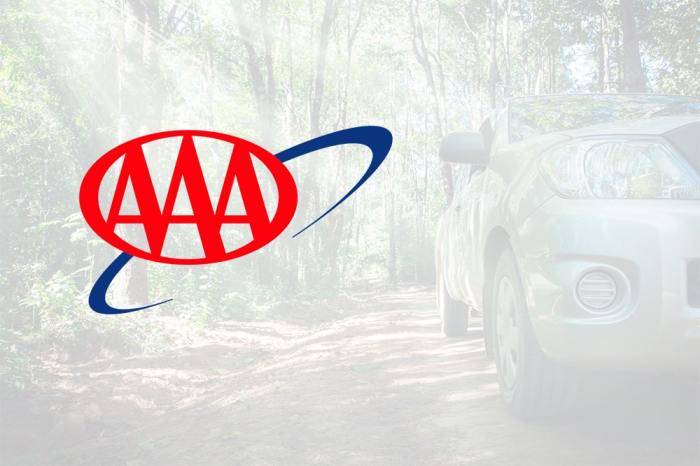Navigating the world of car insurance can feel like driving through a dense fog. Numerous providers, varying coverage options, and complex jargon often leave consumers overwhelmed and unsure of how to secure the best protection at the most affordable price. This comprehensive review aims to illuminate the path, providing a clear understanding of consumer needs, provider features, and policy choices to help you make informed decisions about your car insurance.
We’ll explore key factors consumers prioritize when selecting a policy, delve into the features and services offered by leading providers, and analyze the intricacies of different coverage options. We’ll also examine the claims process, customer support experiences, and ultimately, how to assess the overall value and satisfaction you can expect. By the end, you’ll be better equipped to compare providers, understand your coverage needs, and confidently choose the right car insurance for your circumstances.
Evaluating Car Insurance Policies and Coverage Options

Choosing the right car insurance policy can feel overwhelming, given the variety of options and terminology. Understanding the different types of coverage, the factors influencing cost, and the benefits of various levels is crucial for making an informed decision that protects both your finances and your vehicle. This section will break down the key aspects to consider.
Types of Car Insurance Coverage
Car insurance policies typically offer several types of coverage, each designed to protect you in different situations. Understanding these distinctions is key to selecting the right level of protection.
- Liability Coverage: This is the most basic and often legally required type of car insurance. It covers damages or injuries you cause to others in an accident you are at fault for. Liability coverage typically includes bodily injury liability and property damage liability.
- Collision Coverage: This covers damage to your own vehicle, regardless of who is at fault, in an accident. This means if you hit another car, a tree, or even a deer, your collision coverage will help pay for repairs or replacement.
- Comprehensive Coverage: This covers damage to your vehicle caused by events other than collisions, such as theft, vandalism, fire, hail, or natural disasters. It’s a broader protection than collision coverage.
- Uninsured/Underinsured Motorist Coverage: This protects you if you’re involved in an accident with an uninsured or underinsured driver. It covers your medical bills and vehicle repairs if the at-fault driver doesn’t have sufficient insurance.
- Medical Payments Coverage (Med-Pay): This covers medical expenses for you and your passengers, regardless of fault, following an accident. It can help with immediate medical costs while you await settlement from other insurance.
Factors Influencing Car Insurance Costs
Numerous factors contribute to the overall cost of your car insurance premium. Understanding these factors can help you anticipate costs and potentially find ways to lower your premiums.
- Driving Record: A clean driving record with no accidents or traffic violations will generally result in lower premiums. Conversely, accidents and tickets significantly increase your rates.
- Vehicle Type: The type of car you drive plays a significant role. Sports cars and luxury vehicles are often more expensive to insure due to higher repair costs and a greater risk of theft.
- Location: Your location impacts your insurance cost. Areas with higher rates of accidents and theft generally have higher insurance premiums.
- Age and Gender: Younger drivers and males often pay higher premiums due to statistically higher accident rates in these demographics.
- Credit Score: In many states, your credit score is a factor in determining your insurance rates. A good credit score can lead to lower premiums.
Comparing Coverage Levels: Benefits and Drawbacks
Different coverage levels offer varying degrees of protection, each with its own set of advantages and disadvantages. The optimal level depends on your individual circumstances and risk tolerance.
For example, a minimum liability coverage might be sufficient for someone with an older, less valuable vehicle, but someone with a new car and significant assets might opt for higher liability limits and comprehensive coverage. Similarly, someone with a high-risk driving record might face higher premiums but benefit from having adequate coverage to protect against potential liabilities.
Scenarios Illustrating Coverage Benefits
- Scenario 1: You are rear-ended while stopped at a red light. Your vehicle sustains significant damage. Collision coverage will cover the repairs to your vehicle, regardless of fault. If the other driver is uninsured, uninsured/underinsured motorist coverage will be crucial.
- Scenario 2: Your car is stolen from your driveway. Comprehensive coverage will reimburse you for the loss of your vehicle.
- Scenario 3: You cause an accident injuring another driver. Liability coverage will pay for the other driver’s medical bills and vehicle repairs, up to your policy limits.
Illustrating Key Concepts with Visual Aids

Visual aids significantly enhance understanding of complex insurance concepts. By presenting data graphically, we can clarify the often-opaque world of car insurance premiums and coverage options, making informed decisions easier. The following examples demonstrate how visual representations can illuminate key aspects of car insurance.
Factors Influencing Car Insurance Premiums
A compelling visual representation of the factors influencing car insurance premiums could take the form of a circular chart, or pie chart. The largest segment of the circle, perhaps 40%, would represent the driver’s driving record. Within this segment, smaller wedges could depict specific factors like accidents (15%), speeding tickets (10%), and claims history (15%). The next largest segment, maybe 30%, would be the vehicle itself, subdivided into vehicle type (e.g., sedan, SUV, sports car – each with its own percentage), vehicle age, and safety features. A smaller segment (15%) would represent location, reflecting higher premiums in areas with higher accident rates or theft. Another segment (10%) could depict insurance history, representing the impact of past insurance lapses or cancellations. Finally, a smaller segment (5%) could account for other factors such as age and gender. The use of different colors for each segment (e.g., red for negative factors, green for positive) would further enhance visual clarity and impact.
Comparison of Different Car Insurance Coverages
An infographic comparing different types of car insurance coverage could utilize a series of bar charts, each representing a different coverage type. The horizontal axis would list the coverage types: Liability, Collision, Comprehensive, Uninsured/Underinsured Motorist, and Medical Payments. The vertical axis would represent the coverage amount, expressed in monetary units (e.g., thousands of dollars). Each bar would be a different color; for instance, Liability could be blue, Collision could be green, Comprehensive could be yellow, Uninsured/Underinsured Motorist could be orange, and Medical Payments could be purple. The height of each bar would visually represent the cost of that coverage, allowing for immediate comparison. Beneath each bar, a brief description of the coverage provided could be included. Additionally, a small icon representing a key feature of each coverage type could be incorporated (e.g., a car crash for Collision, a lightning bolt for Comprehensive). This infographic would enable quick visual comparison of the cost and benefits of various coverage options, empowering consumers to make informed choices.
Final Wrap-Up

Choosing the right car insurance policy is a crucial decision impacting your financial well-being and peace of mind. This review has provided a framework for understanding consumer expectations, analyzing provider offerings, and navigating the complexities of coverage options and claims processes. By carefully considering your individual needs, comparing providers based on key features and customer ratings, and proactively engaging with your insurer, you can secure a policy that provides adequate protection while offering excellent value. Remember to regularly review your policy and make adjustments as your circumstances change to ensure you maintain optimal coverage.
Key Questions Answered
What is the difference between liability and collision coverage?
Liability coverage pays for damages you cause to others, while collision coverage pays for repairs to your own vehicle, regardless of fault.
How often should I review my car insurance policy?
It’s advisable to review your policy at least annually, or whenever significant life changes occur (e.g., new car, change in driving habits, marriage).
What factors affect my car insurance premium the most?
Your driving record, vehicle type, location, age, and credit score are major factors influencing your premium.
Can I cancel my car insurance policy at any time?
Generally, yes, but you may be subject to penalties or fees depending on your policy terms and the reason for cancellation. Check your policy for specifics.